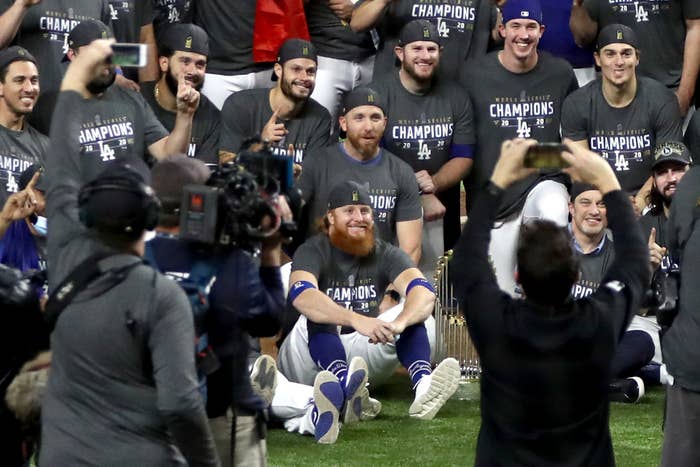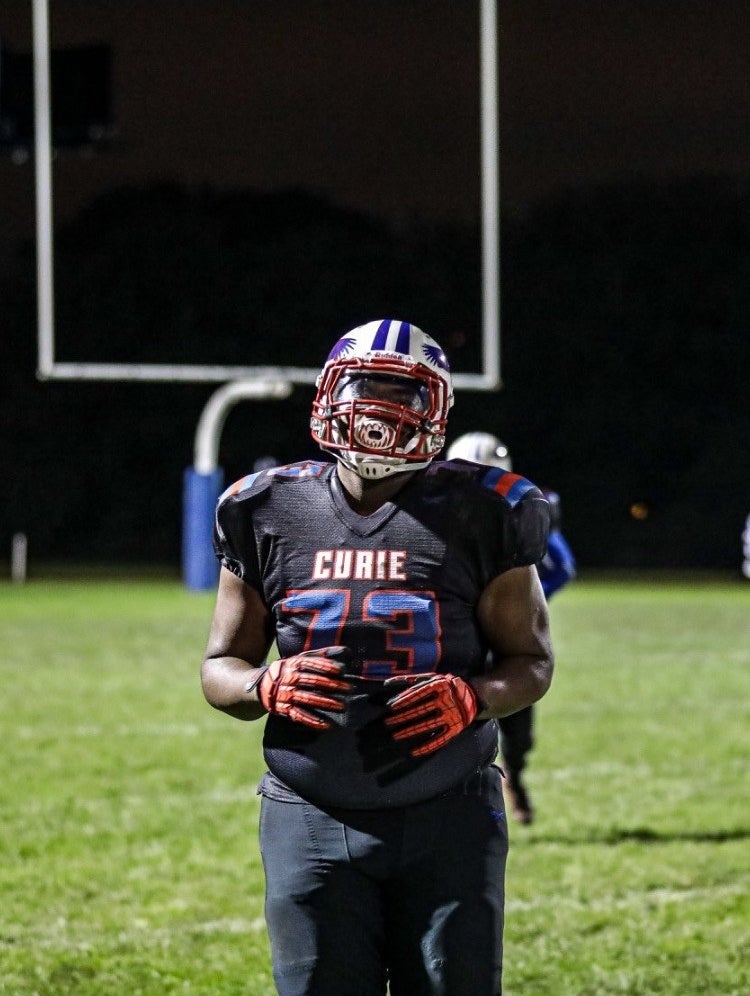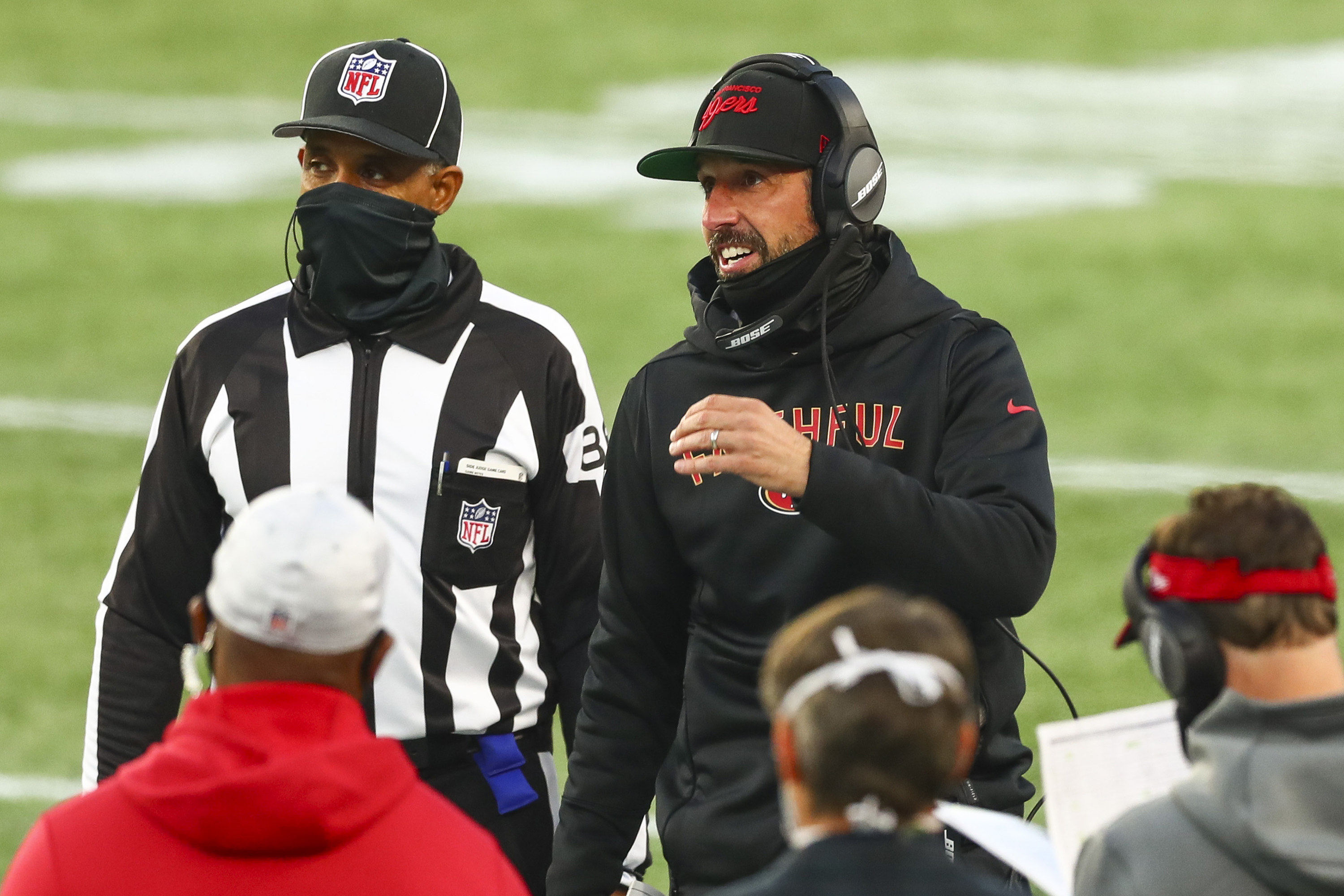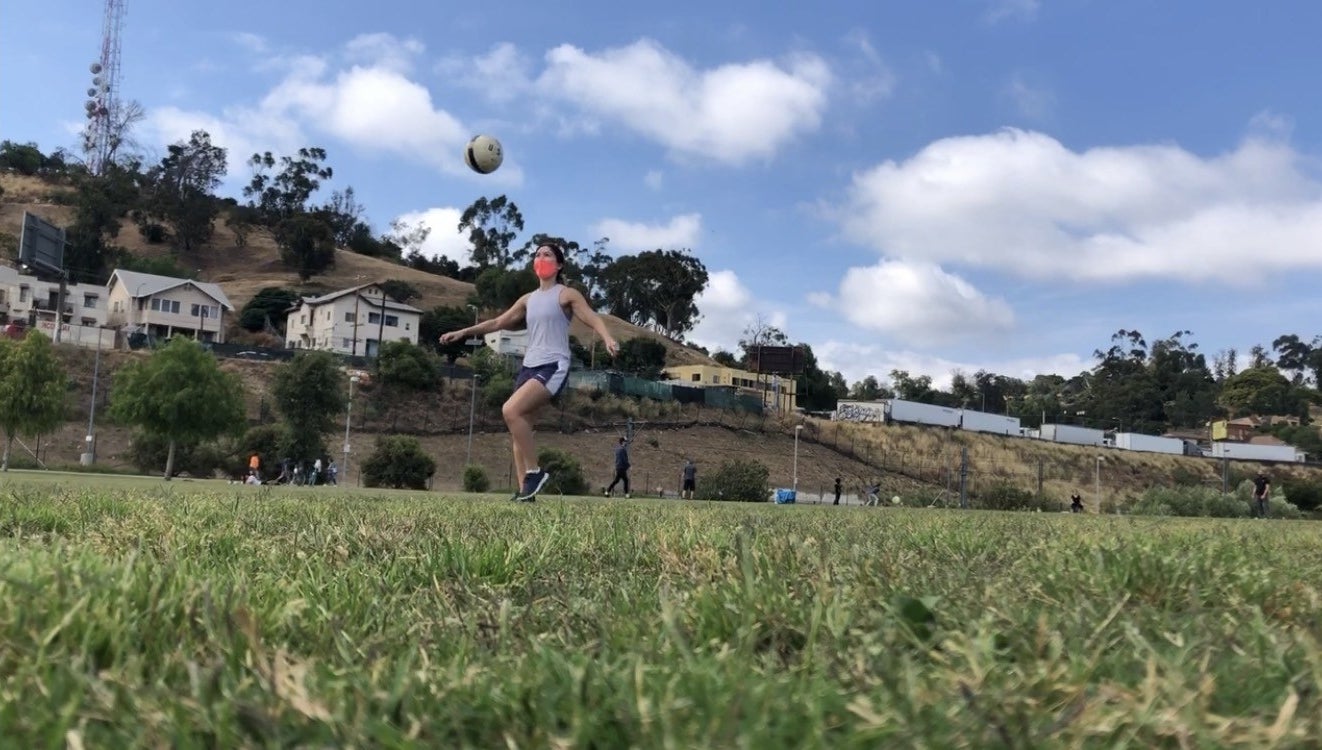
Erica Ayala loves sports so much she turned it into her career as a freelance journalist covering hockey, basketball, and soccer.
When leagues abruptly shut down because of the coronavirus in March, Ayala worked overtime stringing together story ideas and finding new ways to tell them on her own platforms to stay afloat.
Months later, during October’s World Series, the 34-year-old New Yorker found herself quarantining in a Queens hotel room after traveling for an assignment and finally able to watch sports purely for fun.
But after the Los Angeles Dodgers clinched their first championship in over 30 years, broadcasters revealed that Justin Turner had been removed during the game because he had tested positive for COVID-19. Then, in a shocking moment, the third baseman walked back onto the field during the victory celebration, hugged his teammates, touched the trophy, and took off his mask for pictures.

“I went right back to, What are we doing?” Ayala told me. “It was that fleeting moment of being able to really sit back and enjoy sports, and just at the snap of a finger, that went away.”
As I watched the saga unfold from my living room less than a mile away from where fans gathered to celebrate near Dodger Stadium, I also grew increasingly distressed. There we were on the verge of another surge in cases, still struggling to control a disease that, at that point, had killed more than 225,000 Americans and sickened millions more. For a brief moment, I had tried to escape it all and savor something that normally brings me a lot of pleasure. Instead, like Ayala, the experience left me more disappointed than ever with how we as a country have handled the pandemic.
In recent weeks, daily COVID-19 death tolls have resulted in some of the deadliest days in US history. As more professional and collegiate athletes get sick, I keep coming back to a question that’s weighed on me for months: Should athletes be playing sports right now? I’d hoped sports would be a distraction from the pandemic, but even they aren’t immune from the virus.

“The joy is completely sucked out of a game where you have to watch … two professional teams of benchwarmers,” said Marvin Phipps, an 18-year-old high school football player in Chicago and NFL fan. “These are high[-performing] athletes that are good at what they do, that we cannot watch anymore because they are hurt or out because of the pandemic.”
Sports have always been problematic in certain ways — whether that’s brain injuries, women players being underpaid, athletes being punished for taking political stands against racism, or college teams playing for free. But for a lot of people, myself included, sports also offer an escape from the daily grind. “The NBA is truly the best running drama on TV,” Jason Schwartz, a senior editor at Sports Illustrated, told me. Full of tradition and tribute, we treat sports as a religion, hold athletes up as royalty (remember when we anointed Alex Morgan the Queen of England?!), and make Sunday game days their own kind of ritual. But in a year in which every day bears reminders of the collective trauma we’re going through, the rituals don’t provide the same solace.
“Sports are a meaningful part of our culture and they mean a lot to a lot of people and I think that's very real, but the question is, at what cost?” Schwartz asked. “When the 49ers are relocating out of state, like actually to a place that has more COVID but looser regulations, I think we have to start asking some questions about, what are we prioritizing here?”
That question has been front of mind for me this year. After California reopened too quickly over the summer, schools were unable to open for in-person learning because of an alarming increase in cases. While nurses working on the frontlines of the pandemic have struggled to get tested for COVID-19 at work, professional athletes have been tested multiple times a week. There are already reports about at least one league floating plans to purchase vaccines for everyone involved in their upcoming season (the government is providing vaccines to all Americans at no cost).
In some states, youth and high school games have been postponed because of the risks of coronavirus transmission in contact sports where distancing isn’t possible, but at the collegiate and professional levels — where officials bank on reducing spread with rigorous testing — games go on. On the court, the ice, or the pitch, players aren’t forced to wear masks or keep 6 feet apart. Goal celebrations haven’t changed.
“There are exceptions being made for sporting events that aren't being made for mosques, synagogues, churches, schools, offices,” said Ayala. “I don't think that's appropriate.”
In September, my husband and I met up with a couple friends at a park to kick a soccer ball around. We usually just pass the ball back and forth, but this time we tried to play two on two, distanced and masked. Having played soccer competitively growing up, I had to rein in my instincts to run at our friends and physically knock them around to steal the ball. Several times I yelled at my husband, fearing he was too close. After about 10 minutes, I stopped the game, feeling uneasy about the possibility that one of us could be asymptomatic and get someone else sick.
While there are ways to reduce the risks of transmitting COVID-19, the very nature of contact sports goes against the basic public health principles we’ve learned to stop the spread of the virus. There is physical contact, mixing of households, shouting, and depending on the sport, multiple people frequently touching the same thing without disinfecting it.
Such fears also plague Dolores Trujillo, who normally decompresses from her job as a neonatal intensive care nurse at Kaiser Permanente in Roseville, California, by watching her beloved San Francisco 49ers play. But when the frontline worker watches games this year, she thinks of all the possible ways players and team personnel may be getting exposed to the coronavirus and notes who isn’t wearing a mask on the sidelines (coaches are required to wear face coverings at all times and several, including San Francisco’s Kyle Shanahan, have been fined for not following the protocol).

“COVID has seeped into sports and affected where games are played, when games are played, or if they're played at all,” Trujillo, 60, said. “I don't think there’s any way you cannot think about it.”
After an outbreak sidelined the Miami Marlins days after the MLB season started in July, Commissioner Rob Manfred said the season was built to go on despite positive tests.
“I don’t see it as a nightmare,” Manfred said at the time. “We think we can keep people safe and continue to play.”
But while play has continued, those involved in sports have not always been safe. A recent New York Times analysis found that at least 6,629 college athletes, coaches, and staff members have tested positive for the coronavirus this year, noting that their tally is likely an undercount due to incomplete data. Before Turner’s positive result, MLB had gone 59 days without a positive test, reporting a total of 89 COVID-19 cases among players and staff during the shortened season, a league spokesperson told me. From the beginning of August to Dec. 12, 187 NFL players and 328 other personnel have tested positive for COVID-19. NFL officials have said they have yet to find any evidence of on-field transmission among players, and that in most cases they believe players and personnel have become infected outside of team facilities.
Some leagues fared far better by creating a bubble environment where games were played in one location with everyone isolated from the outside world and tested regularly. The National Women’s Soccer League played a monthlong tournament in Utah with no one inside the bubble testing positive. The NBA, WNBA, and NHL also had zero outbreaks after resuming their seasons in bubble environments. But the circumstances also took a toll on players' mental health, with many athletes separated from their families for months.
While the long-term health impacts of the coronavirus are not yet fully known, experts have found that the virus can cause myocarditis, an inflammation of the heart muscle that can lead to sudden cardiac arrest, in athletes and otherwise healthy patients. Boston Red Sox pitcher Eduardo Rodriguez was forced to sit out the 2020 season after being diagnosed with the heart condition, which the team believed the 27-year-old developed as a result of COVID-19. Earlier this month, University of Florida basketball player Keyontae Johnson was hospitalized after collapsing on the court during a game. It was unclear what caused him to pass out. In November, the team opted out of a tournament due to positive COVID-19 tests. A spokesperson for the team declined to clarify whether Johnson ever tested positive.
Watching professional athletes risk their health to play sports during a pandemic is hard enough, but expecting college athletes, who don’t get paid, to do the same is disturbing. The pandemic has highlighted all the fissures in society, the inequality in sports now even more obvious. As Schwartz put it, “It’s difficult not to watch those games and have a little pit in your stomach.”
I was shocked when I learned last month that the Big Game, the annual football match between my alma mater Cal and our longtime rival Stanford, was going to go on despite rising cases in the Bay Area. In my family, the Big Game is a big deal. Every year, to torment my dad, who went to Stanford, I wear a T-shirt commemorating Cal’s infamous 1982 comeback, known as “The Play,” a source of agony for my father, who was in the stadium when the Golden Bears scored the winning touchdown with mere seconds left in the game. Last year, I nearly lost my voice cheering for Cal as Dad and I took in the game at a packed bar in downtown Palo Alto. This year, I didn’t even watch it.
Not only did I feel like it wasn’t safe for them to play, but I also just couldn’t get excited about it. A big part of sports is sharing the experience with friends, family, and strangers. There’s a reason why after the LA Lakers and the Dodgers won championships this year that fans flooded the streets outside Staples Center and Dodger Stadium, against public health guidance. They just wanted to relish it with other people. In a time when fans have largely been prohibited from entering stadiums and arenas and gathering with others at bars and in our homes is discouraged, watching sports has been an unusually lonely affair.
Not being able to go to games “distances you from the team and from the community,” said Dr. Paul Offit, a vaccine expert at Children's Hospital of Philadelphia and Eagles season ticket holder. “It’s always the same people in front of me, behind me, and next to us. It’s like your little football community.”
Offit said the only way to play sports safely during the pandemic is in a bubble environment, which he acknowledged is a hard sell for a lot of people. Even the NBA abandoned a single-site plan for the 2020–21 season, which started this week.
So if we can’t make it safe, why do it at all?
Well, not being able to play has its consequences, too, on players’ mental and physical health and their careers — especially for athletes still looking to turn pro. In a September piece for the Players’ Tribune, Las Vegas Aces guard Kayla McBride talked about how not having basketball made it harder to deal with her anxiety. “I didn’t realize just how much I had let basketball be the thing that carried me — freed me from dealing with the things that were actually going on inside my mind,” McBride wrote. When everything shut down, she “had nothing to keep the dark stuff out.”
While the sudden halt to sports gave US women’s national soccer player Jessica McDonald a chance to recover from the whirlwind of a year that was 2019 — when she won the World Cup and an NWSL championship with her club team — the break also caused her to lose momentum.
Heading into 2020, McDonald, who is 32, was hoping to make the roster for what would have been her first Olympics. Now, after sustaining a hamstring injury over the summer and opting out of the NWSL’s fall series due to COVID-19 concerns, she’s ending the year having played in the least amount of games in her career.
“Now I’m twiddling my thumbs,” she told me. While she has “no regret” for opting out of the fall series because of the travel involved, she just wants to play in a game again. “It's just what I love doing.”
Meanwhile, Phipps, the high school football player from Chicago, hasn’t played in any games this year because his season was postponed by the pandemic. The impact on him mentally is difficult to explain.
“I’m really not fazed by a lot of things because of football, as crazy as that may sound,” said the teen. “By not being able to play, it’s kind of left a hole.”
The lack of high school sports has also meant a lack of scholarship opportunities. Phipps hasn’t been able to visit many programs or show coaches what he can do. He recently committed to play Division Two football at a private university in Illinois that offered him a partial scholarship.
“I wanted to get that full ride because I am capable. I’ve always had a great GPA, I’m good in the classroom, and I'm a good football player,” Phipps said. “There should have been no reason why I couldn’t make my dream happen.”

I let go of any dreams I had to play soccer in college, let alone as a professional, a long time ago. But after this year, I’m realizing that part of the reason why I and so many others care a lot about sports is because, as fans, we dream with the players and the teams we idolize. Their dreams become our own. And watching them fulfill those is an incredible feeling.
Despite my conflicted feelings about sports in 2020, I was so excited to watch the USWNT play the Netherlands last month. A key player was missing because of a positive COVID-19 test, but strict quarantine rules had ensured no outbreaks, and the nature of it being a one-off game made me less worried about the team’s health. A multitude of storylines at play, from the comeback of Kristie Mewis, playing and scoring in her first game with the national team in six years, to the return of Alex Morgan after giving birth to her daughter, and the absolute beauty that is Rose Lavelle’s left foot, provided the thrill I’d craved. I felt the most joy I’ve had watching sports all year and was finally able to escape — if only for 90 minutes. ●
